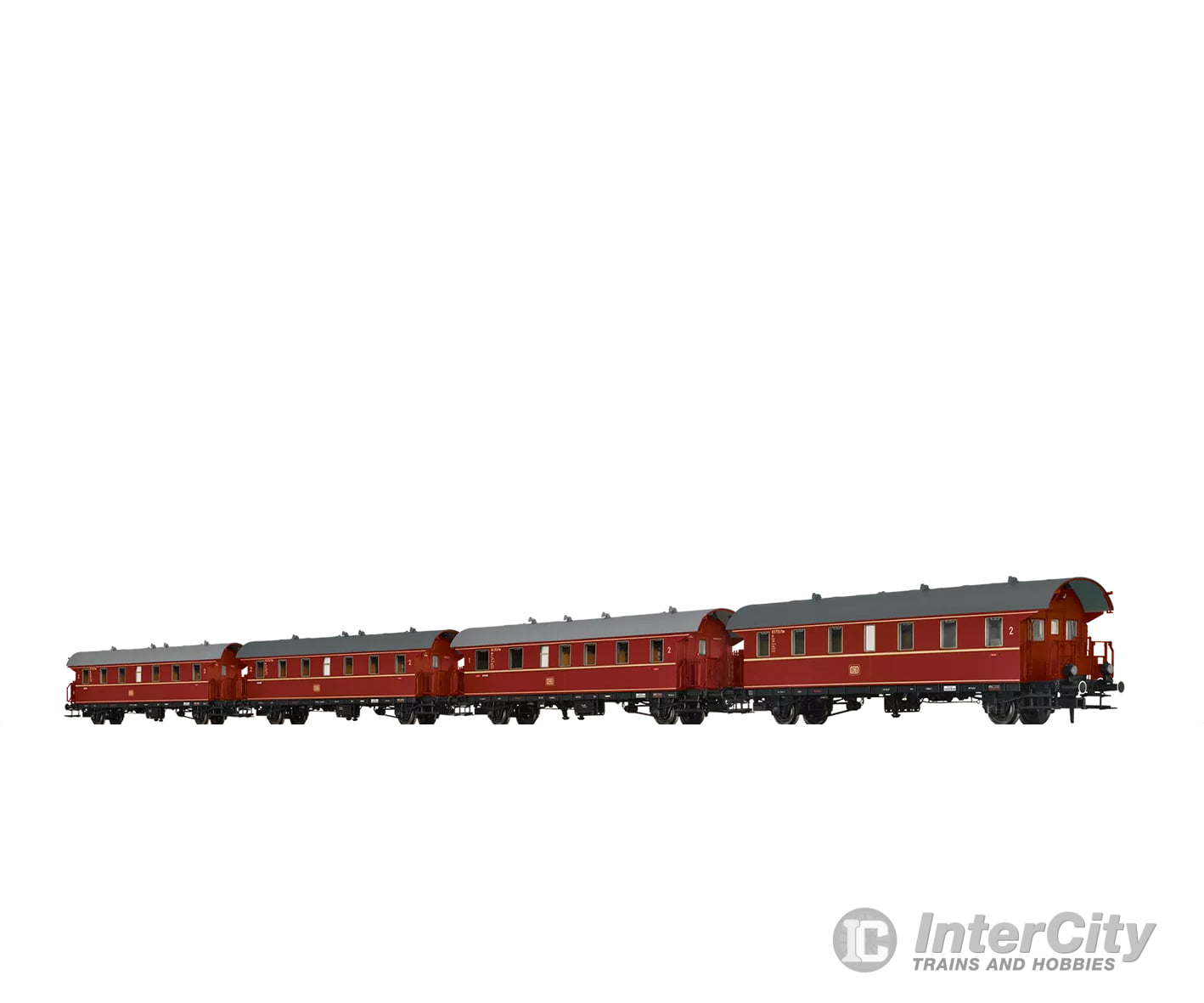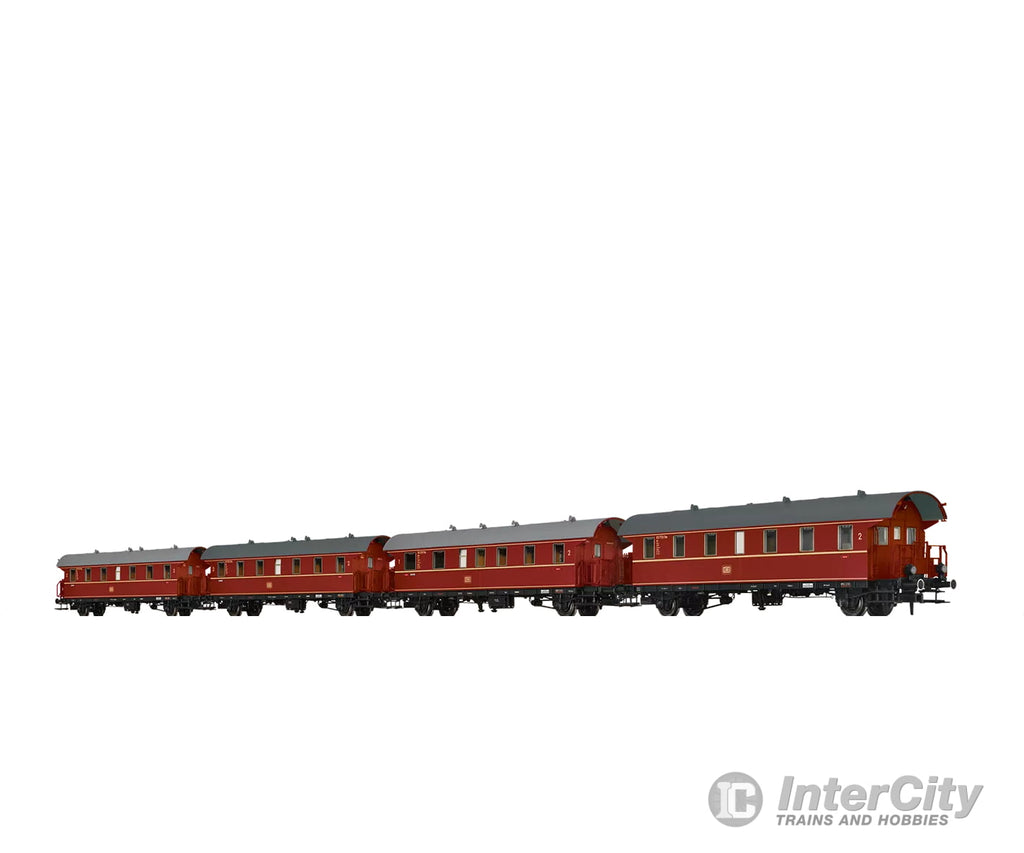Description
Marklin AC Version
MODEL DETAILS
- 1 x Command car
- 2 x Passenger coach 2nd class
- 1 x Passenger coach 1st/2nd class
- Metal axle holders
- True to original axle box cover
- Individually mounted steps
- Axle brake frame with brake blocks in wheel plane
- Individually mounted brake systems
- True to original interior fitting
- Individually mounted wheelchocks
- Finely engraved rivets
-
AC version: Command Car with decoder
INFO ABOUT THE ORIGINAL
The development of the two-axle standard corridor carriages of the “Austauschbauart” (a design based on standardised components) was closely linked to the production of standardised railway components, which emerged as a key industry in the 1920s. The DRG (Deutsche Reichsbahn Gesellschaft) had set itself the goal of having wagon components manufactured on a cross-company basis in accordance with standardised specifications and conditions, in order to drastically reduce the cost of subsequent maintenance at its own works and to ensure the use of interchangeable components. Against this background, the DRG commissioned the Gesellschaft Deutscher Waggonfabriken (D.W.V.) to develop and deliver the required standard corridor carriages. The specification for the standardised wagons of the “Austauschbauart” meant it was no longer necessary to produce around 1,400 drawings for each individual wagon class. Instead, there was now one basic type that provided the basis for the modified designs, which required approximately 150 drawings each. Starting in 1928, almost 5,500 cars of the various classes BCi-28, Ci-28, CDi-29, Pwi-28, Ci-29 BCi-29, Pwi-29, Bi-29 and Ci-30 were produced for passenger transport in several delivery series. These wagons met the expectations of the DRG and meant that many older state railway cars and related classes could be decommissioned. The running characteristics of these coaches, which were not particularly satisfactory for the passengers, soon earned them the well-known nickname “Donnerbüchsen”. The turmoil of the war years inevitably led to the two-axle standard corridor carriages subsequently finding their way into the inventories of many European railway companies. However, they all shared a common fate – by the late 1960s and early 1970s all of these carriages had been removed from the general maintenance stock. The cars that still exist today serve as very popular attractions at various railway museums in Germany and abroad.


